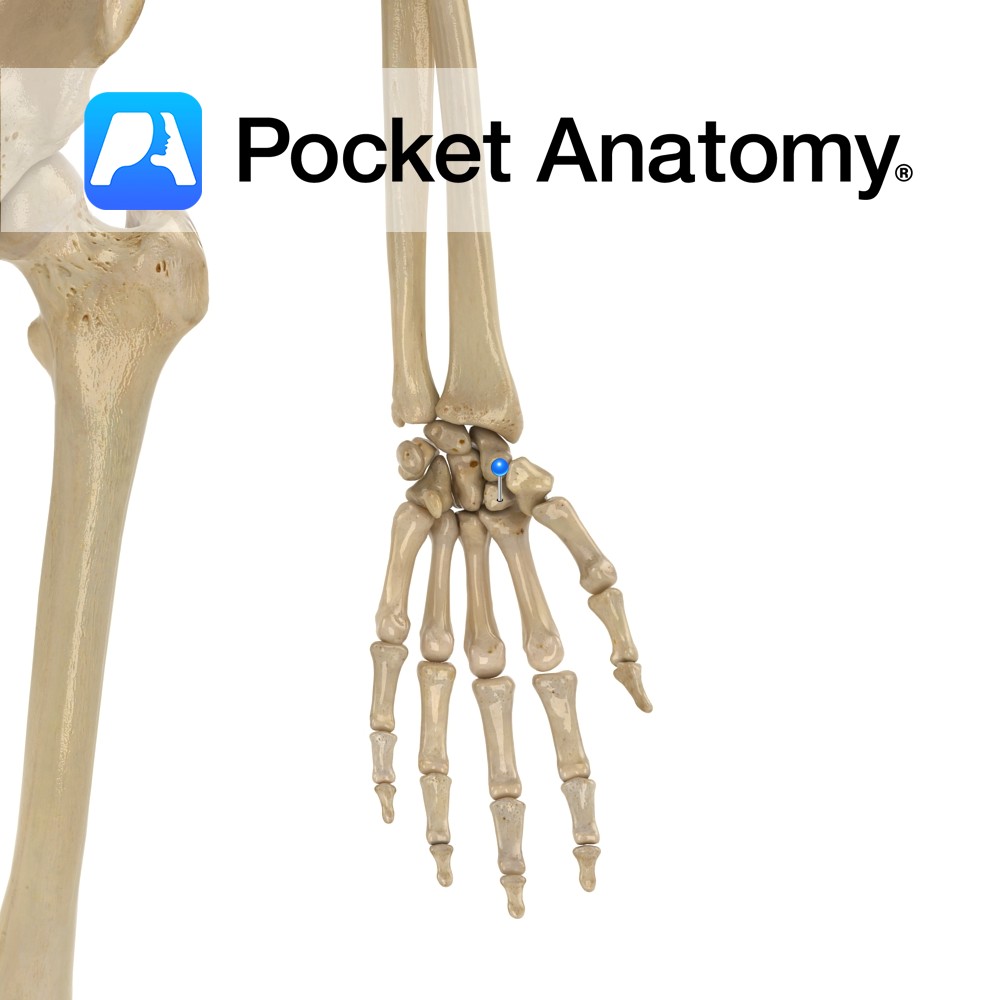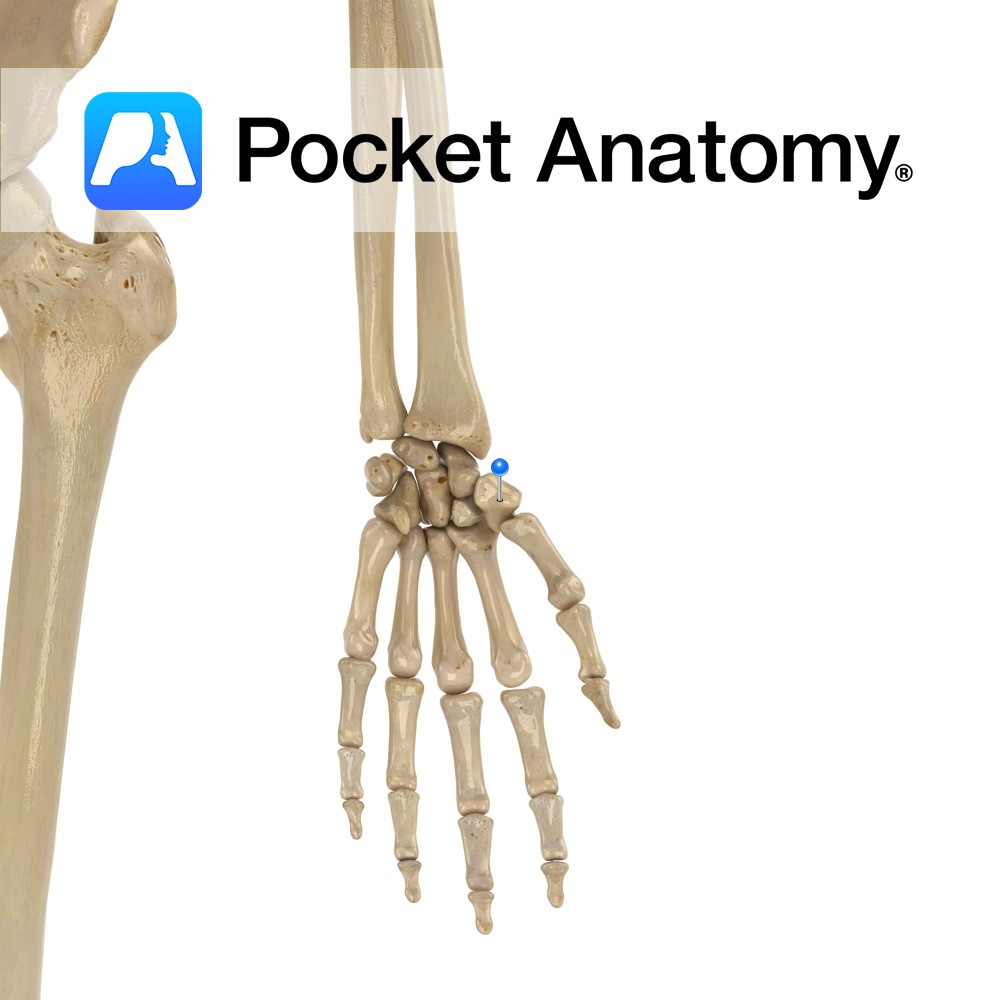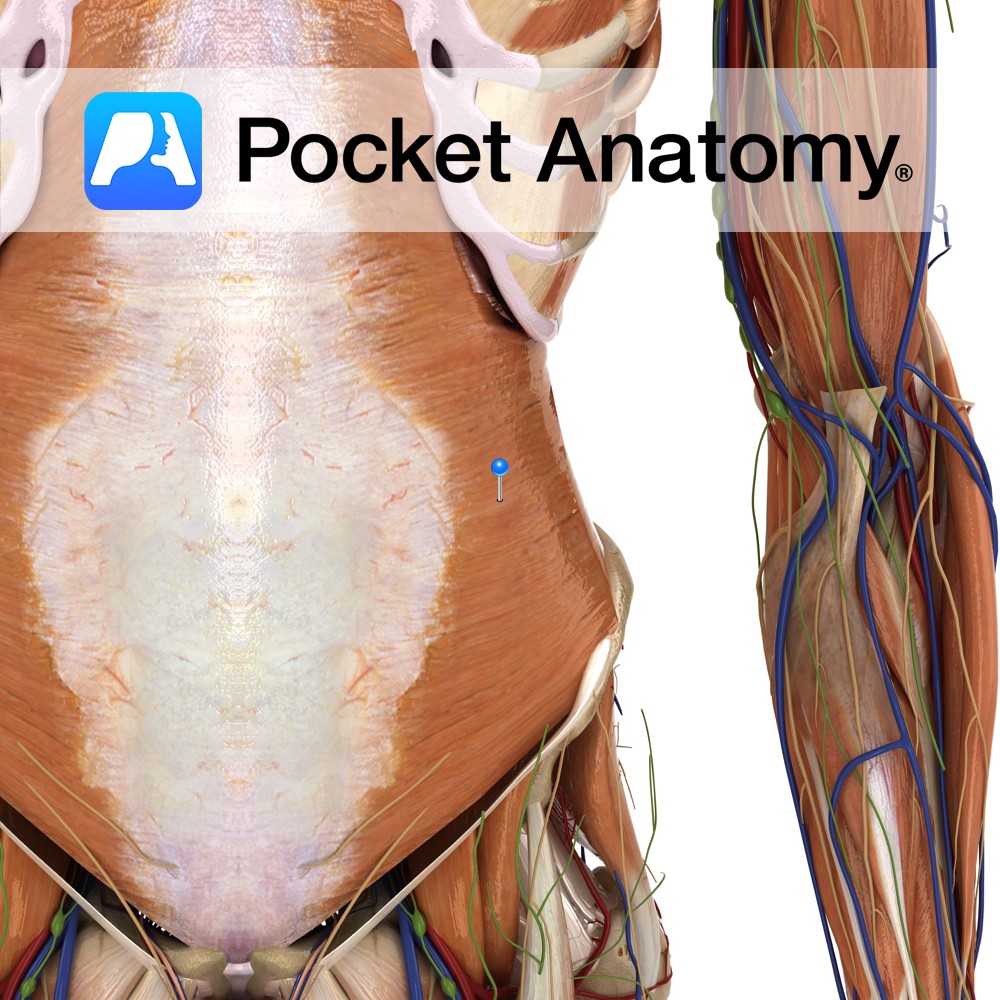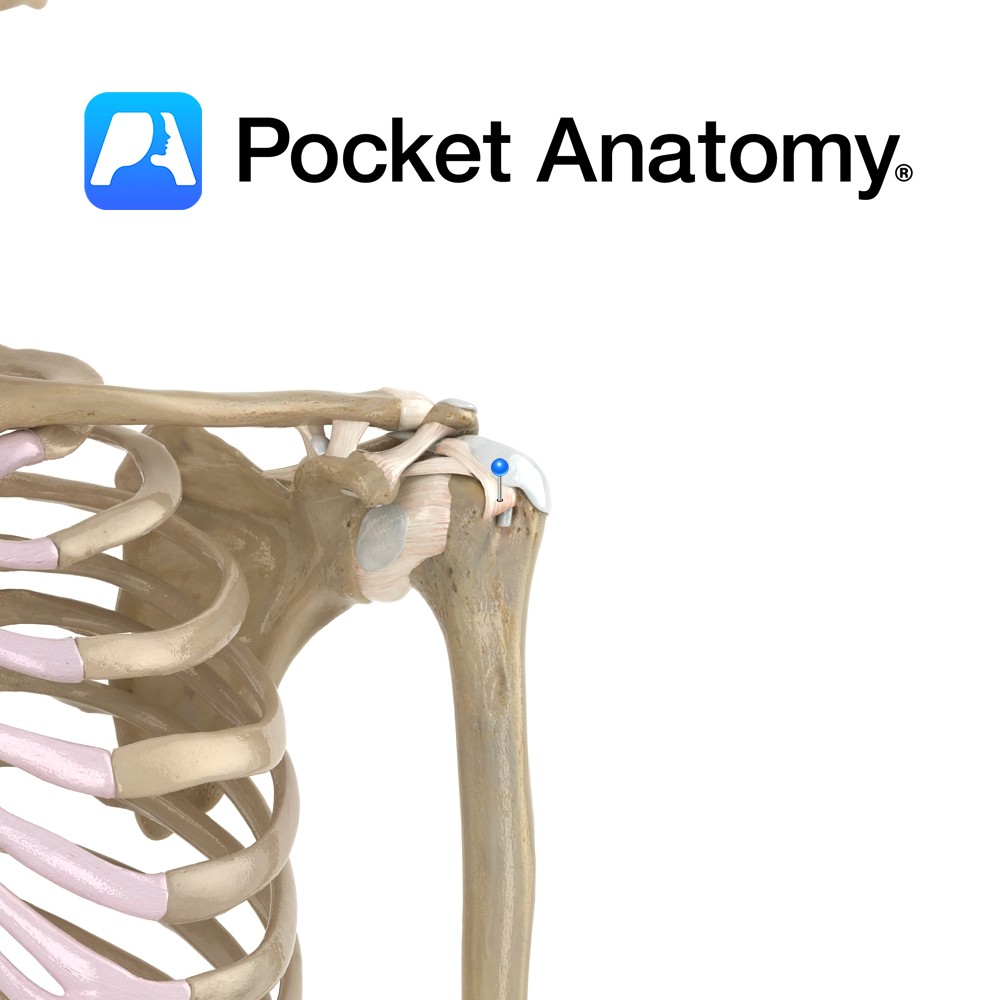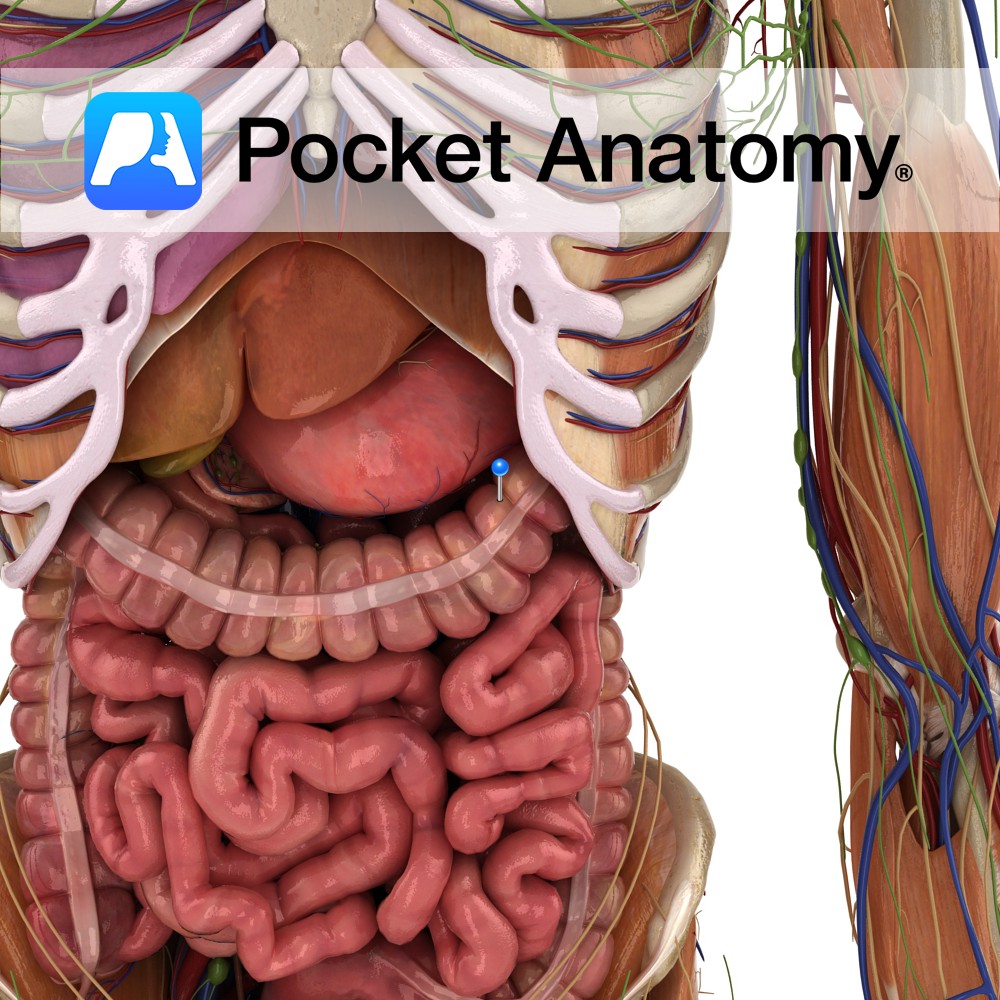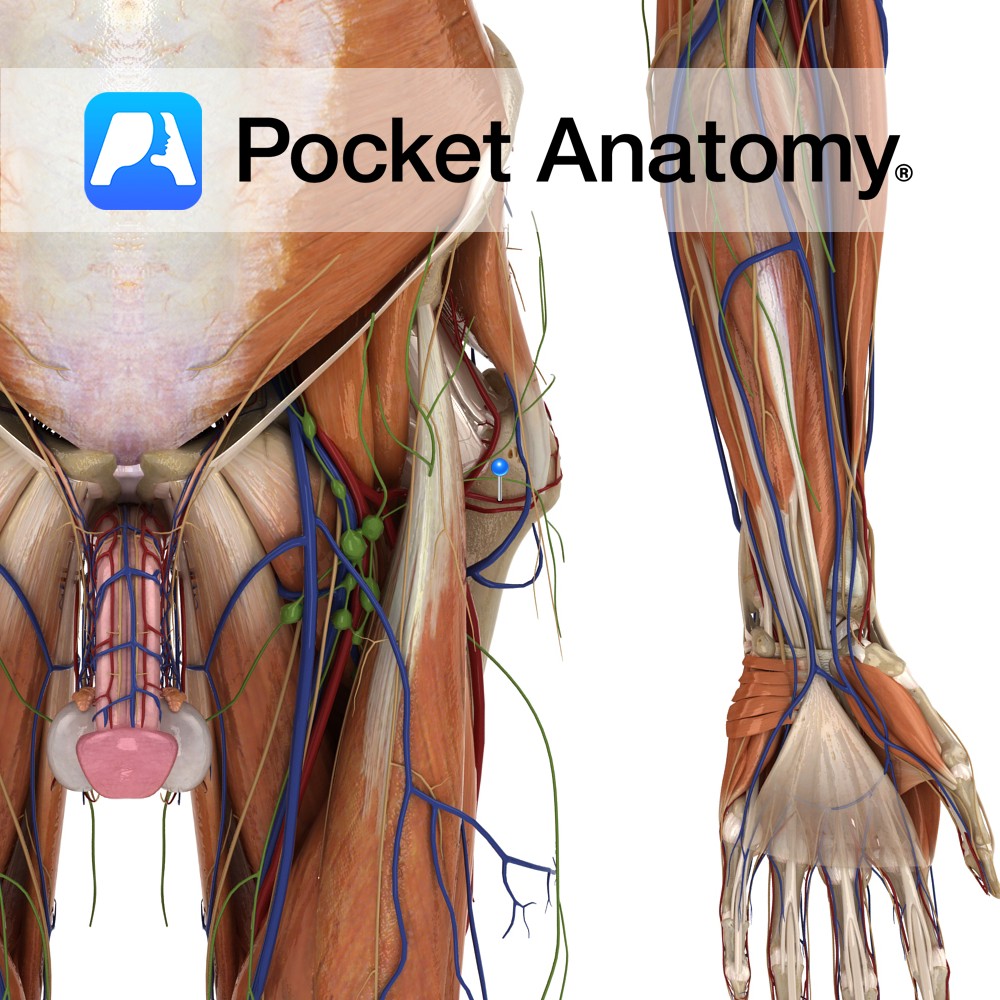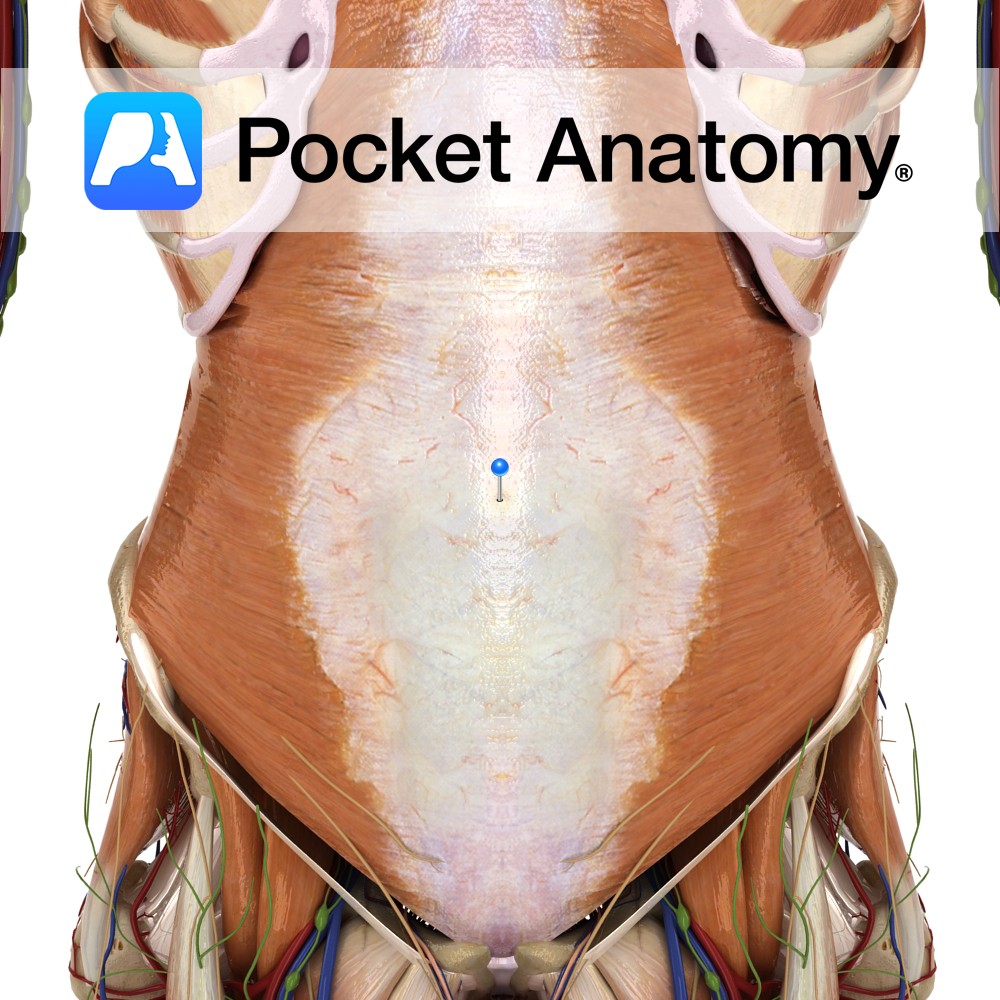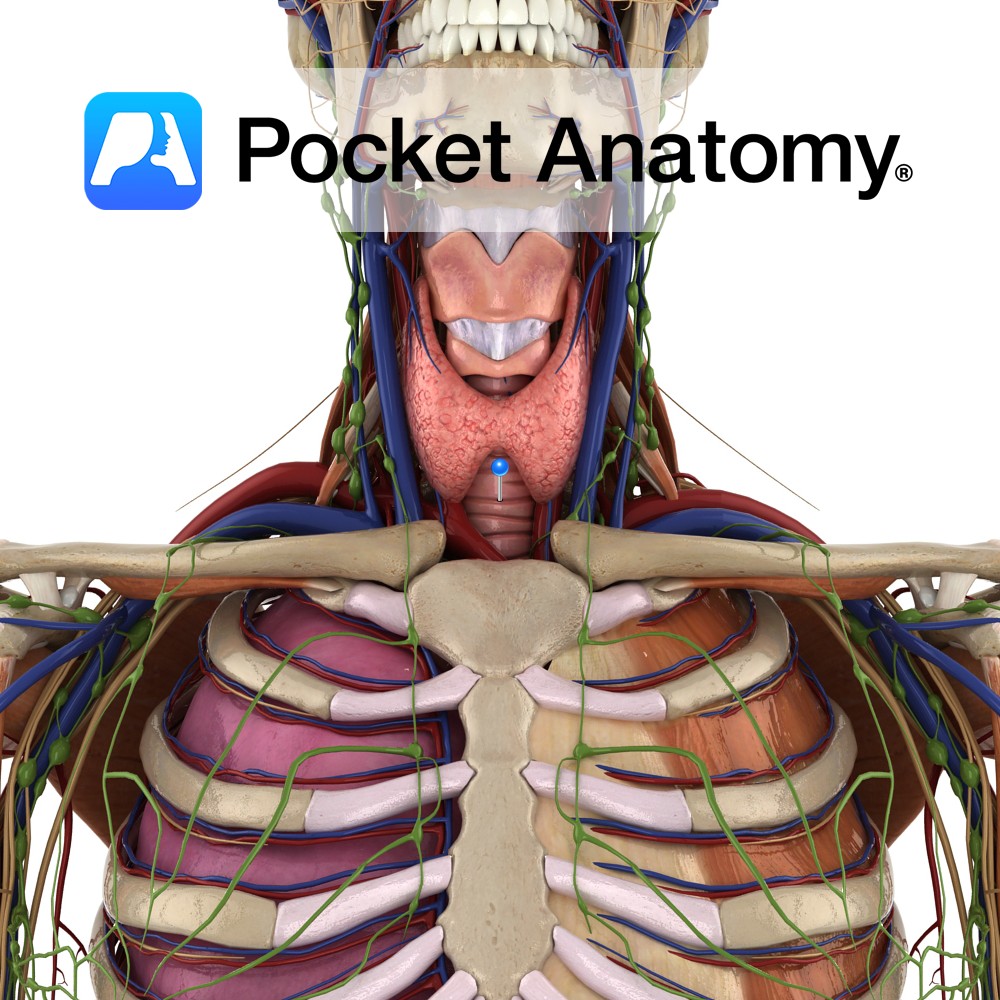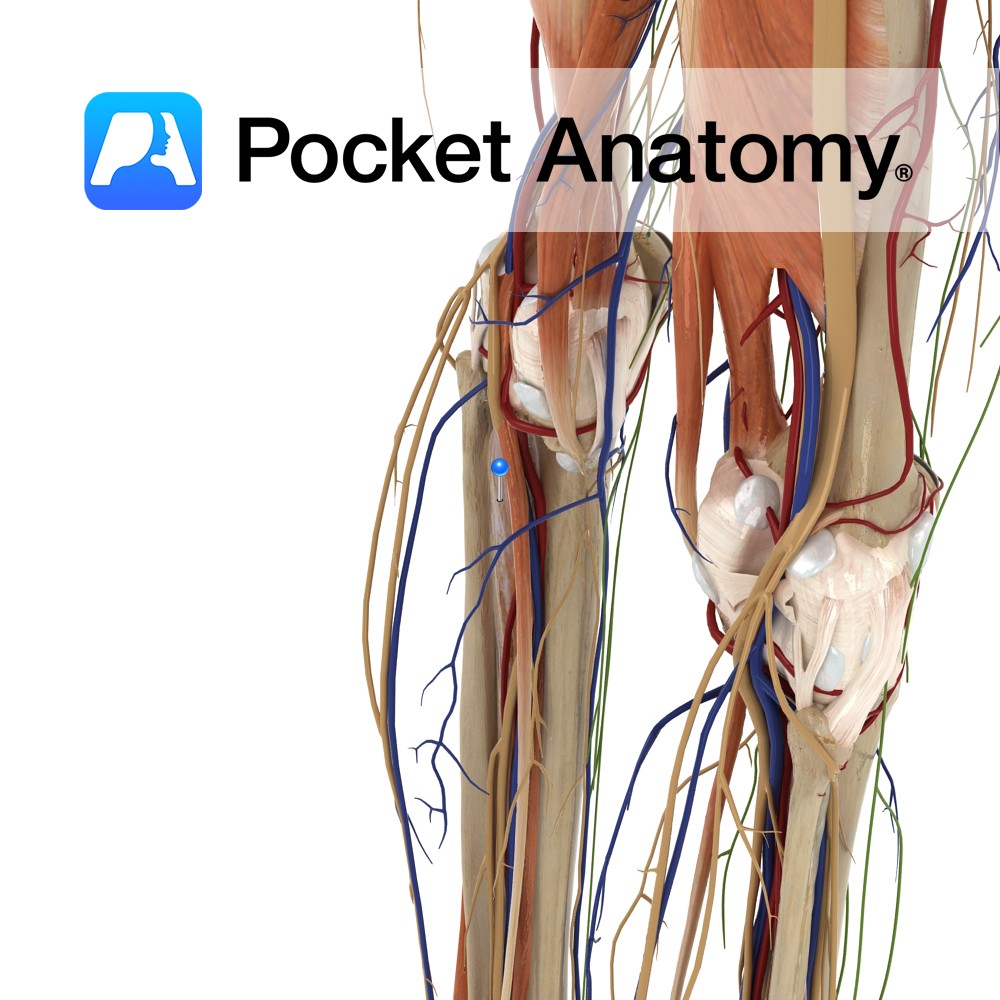PocketAnatomy® is a registered brand name owned by © eMedia Interactive Ltd, 2009-2022.
iPhone, iPad, iPad Pro and Mac are trademarks of Apple Inc., registered in the U.S. and other countries. App Store is a service mark of Apple Inc.
Anatomy Origin: Lateral head: Posterior surface of the humerus superior to the radial groove. Long head: Infraglenoid tubercle of the scapula. Medial head: Posterior surface of the humerus inferior to the radial groove. Insertion: Olecranon process of the ulna and deep fascia of the forearm. Key Relations: -Long head lies between teres minor and teres
- Published in Pocket Anatomy Pins
Anatomy Above 2nd metacarpal in further row of carpal bones, wedge-shaped, narrow end palmar. Articulates up with scaphoid, down with 2nd metacarpal, in with capitate, out with trapezium. Least injured carpal bone. Clinical “Sam Likes To Play; Try To Catch Him”. S, L, T, P, proximal row; T, T, C, H; distal row, lateral (thumb)
- Published in Pocket Anatomy Pins
Anatomy Thumb side, further row of carpal bones, between scaphoid and 1st metacarpal, has deep palmar groove for flexor carpi radialis. Attachments; origin opponens pollicis, and abductor, flexor pollicis brevis, transverse carpal ligament. The saddle-shaped surface articulating with 1st meta-carpal allows large range of thumb movement including opposition. Clinical Often removed in treatment of basal
- Published in Pocket Anatomy Pins
Anatomy Origin: Thoracolumbar fascia, iliac crest, inguinal ligament, costal cartilages and 7th to 12th ribs. Insertion: Xiphoid process, aponeruosis ending in linea alba, pubic crest and pectineal line. Key relations: -Deep to the internal obliques. -Muscle fibres run transversely as the name suggests. -Superior three-quarters lies posterior to the rectus abdominis. -Inferior quarter lies anterior
- Published in Pocket Anatomy Pins
Anatomy A thin band attaching across the proximal part of the bicipital groove. Functions Holds the tendon of the log head of biceps brachii in place as it passes up towards its origin. Interested in taking our award-winning Pocket Anatomy app for a test drive?
- Published in Pocket Anatomy Pins
Anatomy Part of colon from abrupt outward curve of right colic (hepatic) flexure in right to abrupt inward curve of splenic (left colic) flexure in left hypochondrium, convex down, most mobile part of SI, largely covered by peritoneum, connected by transverse mesocolon (mesentery in SI, called mesocolon in LI – double layer of peritoneum caused
- Published in Pocket Anatomy Pins
Anatomy Course This is the smallest branch from the lateral circumflex femoral artery. It travels laterally to pierce the vastus lateralis muscle. It then joins with the medial circumflex femoral artery contributing to the anastomosis around head of the femur. Supply The transverse branch of the lateral circumflex artery supplies the head and neck of
- Published in Pocket Anatomy Pins
Anatomy A continuous fascia that lines the abdominal cavity, deep to the transverse abdominis muscle, and continuous into the pelvic cavity. Superiorly: it blends with the fascia of the inferior of the diaphragm. Posteriorly: it blends with the thoracolumbar fascia. Laterally: with the spine of the ilium. Anteriorly: in the abdomen, both sides converge and
- Published in Pocket Anatomy Pins
Anatomy Windpipe, anterior of neck in front of esophagus, connects larynx (at level C6) and lungs (epiglottis in larynx closes, protects lungs against swallowed material from pharynx); c. 4″ long, 1″ diameter; splits into right/left bronchi level T5; epithelial lining with cilia and mucus provides part of conditioning of inspired air, trapped material wafted up,
- Published in Pocket Anatomy Pins
Anatomy Origin: Posterior surfaces of the tibia below the soleal line, posterior surface of the fibula and posterior surface of the interosseous membrane. Insertion: Tuberosity of the navicular, all cuneiforms, cuboid and the bases of the 2nd, 3rd and 4th metatarsals. Key Relations: -One of the four muscles of the deep posterior compartment of the
- Published in Pocket Anatomy Pins

.jpg)
